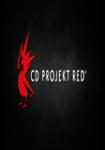
CD Projekt RED - Interview @ DSO Gaming
DSO Gaming has posted the promised interview with CD Projekt RED. Topics include the Witcher 3 Tech: Tessellation, PhysX, DX11.2, Windows 8, and Global Illumination.
DSOGaming: The Witcher 3: Wild Hunt is powered by REDengine 3. What are the key differences between REDengine 2 and 3?
BT: The key difference is that REDengine 3 is made to support open world games. We spent a lot of time figuring out the pipeline and the systems and techniques needed to enable our game teams to achieve their goals, both in terms of storytelling and openness. We also rewrote the renderer to support DirectX 11 – this brought a lot of new features that we can use to make our games look even better.
DSOGaming: What are the key tech features of The Witcher 3, and what is the one that you are really proud of?
BT: We are very proud that The Witcher 2 is considered one of the best looking games on the Xbox 360, so we’ve tried to improve our graphics and we are very satisfied with our initial results. Naturally, we are proud that we made the transition to run our games on multiple platforms and to create the systems for an open world. We also switched our physics middleware from Havok to PhysX and we started using Apex. These were all really big changes and we are far from done – we have a lot more on our plate, including constant improvements to our editor. We should probably get back to this question after the game is released but right now these things come to mind first.
DSOGaming – Readers’ Question – How has native 64-bit affected the engine? How did you achieve a world 35 times larger than
SkyrimThe Witcher 2 and what does it imply about the engine, performance, and requirements? Can you share any estimated minimum/recommended PC requirements?GR: Well, 64-bit architecture gave us access to larger amounts of memory available for the game. I think that’s the biggest benefit. In general the transition to 64-bit went quite smoothly and seamlessly for us.
I admit that the size of the world we have in TW3 provided us with a considerable number of technical challenges. It pushed us to rewrite our streaming system, memory management and resource handling mechanisms. It also required a lot of enhancements from us to the tools used by designers and artists. Many things that were done manually in TW2 had to be automated now to allow us to fill the vast areas Geralt will travel through faster.
It will obviously cause TW3 to have higher requirements than previous installments of the game. But at this stage, without final optimizations, it’s hard to estimate what the minimum system requirements for comfortable playing will be. We will definitely work hard to make this game playable on most gaming PCs.
Read the interview for even more questions. 

